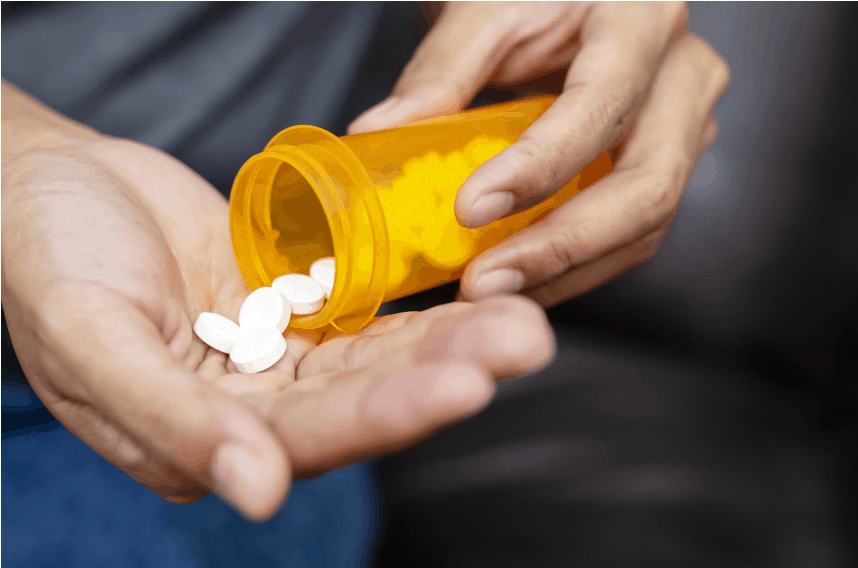Opioids and benzodiazepines (benzos) are two of the most commonly abused substances. They are especially dangerous when combined as opiates slow your heart rate and breathing and, when combined with benzos, a person who overdoses may not wake up. If you or someone you know is struggling with an addiction to opioids or benzos, we encourage you to reach out to Knoxville Recovery Center to speak with a specialist about treatment options that are right for your particular circumstances.
Understanding the Differences Between Opioids and Benzos
Opioids have received increased media attention due to the tragedy of the opioid epidemic. It’s a mistake though to overlook the dangers of other substances including prescription anti-anxiety medications like benzodiazepines.
Opiates and opiates are painkillers designed for temporary relief of pain after someone undergoes surgery and, in some instances, to reduce symptoms of chronic pain. In recent years, doctors and pharmacists have learned there are effective and safer options than prescription opiates and attempts continue to be made to ensure these drugs are only prescribed when in situations that feel absolutely necessary.
Common opiates include:
- Codeine
- Morphine
- Heroin
- Fentanyl
- Oxymorphone (Opana)
- Hydrocodone (Vicodin)
- Oxycodone (OxyContin)
- Hydromorphone (Dilaudid)
- Methadone
- Meperidine (Demerol)
- Tramadol
Benzodiazepines are sedatives prescribed to treat anxiety, panic attacks, sleep issues, and other conditions. Benzos slow down the central nervous system and decrease brain activity so a person’s mind and body are more at ease. Benzos have addictive potential and can, in turn, be habit-forming.
Common benzodiazepines (benzos):
- Xanax
- Ativan
- Valium
- Klonopin
When it comes down to it, addiction is addiction. If someone has developed an addiction to painkillers (either prescription medications or street drugs) or if they have formed a substance abuse issue with anti-anxiety medications like benzos, they are at risk for any number of serious physical and mental health consequences.
The signs and symptoms of an addiction to opioids differ from the signs and symptoms of an addiction to benzos. Knowing the signs can help you help someone you care about before they face serious and potentially life-threatening consequences.
An individual who is abusing painkillers may show both psychological and physical symptoms along with changes in their behavior. A person abusing opioids will often show symptoms of withdrawal between doses. These symptoms can include:
- Shakiness
- Diarrhea
- Nausea
- Vomiting
Someone who is abusing benzos may show symptoms that can include:
- Excessive fatigue
- Difficulty concentrating
- Slurred speech
- Involuntary movements
- Memory issues
Signs of an Overdose and Risk Factors
There are many potential signs that someone is overdosing. Some symptoms may include:
- Disorientation
- Confusion
- Unresponsiveness
- Weakness in extremities
- Weak pulse
- Shallow breathing
- Lips and fingernails are a bluish color
- Gurgling sounds (which indicates a blocked airway)
There are many risk factors that can increase the chances of an overdose. Increasing the amount of a substance that is used and mixing substances are common reasons. Intravenous use of drugs is typically the riskiest method. An individual history of physical and mental health issues is a factor. If someone has recently relapsed, their body may not have the same tolerance and so a dose that previously seemed the standard for them can be far more than their body can tolerate.
What To Do During An Overdose
Call 911. Making this phone call could save a life.
If the overdosed person is responsive, attempt to keep them engaged in conversation. If they are non-responsive, turn them on their side so if they vomit they do not choke which can result in suffocation.
If it appears an overdosed person is not breathing, you can try to perform CPR. Modern CPR methods indicate that the best method is to exclusively focus on chest compressions. Use both hands to press firmly on a person’s chest to the beat of the song “Staying Alive” as this song happens to be at the appropriate tempo. Continue chest compressions until the overdosed person shows vital signs and/or emergency services arrive.
Naloxone (Narcan) and Emergency Intervention
If you or someone you care about is struggling with addiction, you may want to consider acquiring Narcan (naloxone) to keep on hand in case of emergency. Naloxone, often sold under the brand name Narcan, is a medication used to counter the effects of opioids. If a person is overdosing on opioids, administering naloxone can save their life.
Naloxone is a temporary fix. This medication clears an overdosed person’s system of opioids and allows their breathing to return to a more regulated state. As a side effect, the body is in a state of extreme acute withdrawal, and this will cause a person to have intense cravings. It’s important to know that a person can still overdose again once the first dose of naloxone has been administered.
When administering the nasal spray form of naloxone, spray once in each nostril of the overdosed person. Next, rub their chest to promote breathing and blood flow throughout their body. When contacting emergency personnel, ask them to make sure they bring more doses of naloxone.
Reach out to Knoxville Recovery Center to learn more about Addiction Recovery
If you or someone you care about has developed an addiction to opioids or benzos, we encourage you to reach out to the experts at Knoxville Recovery Center for assistance. We provide personalized care and treatment for those struggling with substance abuse. Contact us today to speak with a specialist who can help you learn more about treatment options.











